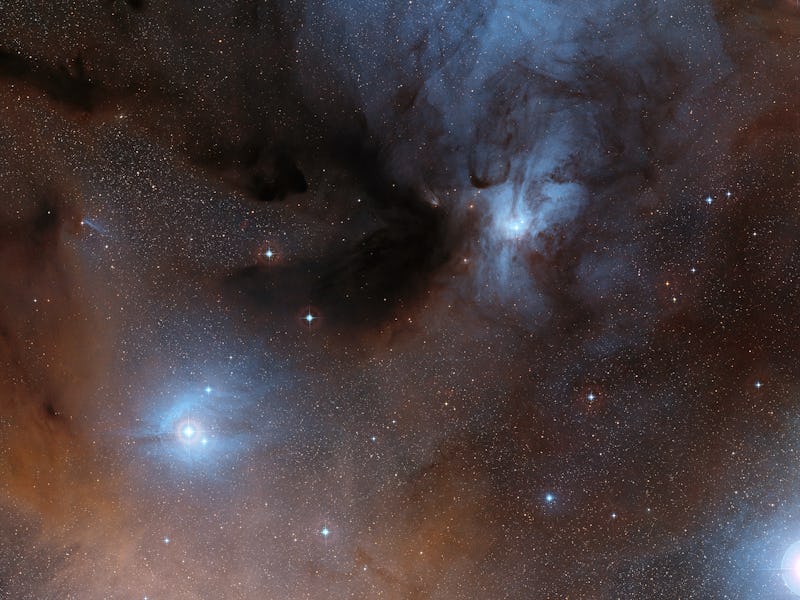Scientists Find Cold Grains of Matter in "Flying Saucer" Object in Space
Sheds new light on how planets are born.

When a star decides to settle down and start a family of planets, it begins to accrete large amounts of gas and dust into a disc that orbits it. All that matter starts to collect into individual grains that snowball into bigger objects over time. Millions and millions of years later, you have a planetary system like our very own solar system.
How exactly this process works, however, has stumped scientists for — well, since forever. Now, astronomers from the European Southern Observatory have, for the first time, directly measured the temperature of large dust grains within those planet-forming accretion discs around stars. In this particular instance, they found that those grains are much colder than expected — by a staggering -266 degrees Celsius, just 7 degrees above absolute zero. The results basically suggest that we need to rethink the model for how planets are formed.
To make this discovery, the international team chose to study the accretion disc currently enveloping the star 2MASS J16281370-2431391 — a mere 400 light-years from Earth. Astronomers affectionately call it the “Flying Saucer” since — well I mean, just look at it:
The young star 2MASS J16281370-243139 and its accretion disc -- a.k.a. the Flying Saucer
Using the Atacama Large Millimeter/submillimeter Array (ALMA) located in the Chilean Andes, the astronomers observed the carbon monoxide glow emitting from the star’s disc, and unexpectedly picked up negative signals — which, in normal circumstances, is physically impossible.
In this case, a negative signal basically illustrates that parts of the disc are colder than the background, at least from our perspective. “The Earth is quite literally in the shadow of the Flying Saucer!” lead study author Stéphane Guilloteau said in an ESO press release.
These measurements were combined with observations collected using the IRAM based in Spain. After careful analysis, the team found that certain dust grains were only -266 degrees Celsius, higher than the -258 to 253 range scientists previously had down.
That doesn’t sound like a real big difference, but in space, the impact of those few degrees can be extraordinary. Large grains, in this instance, must have different properties than we once thought in order for them to cool down to such freezing temperatures.
A starry night at the ALMA site.
Of course, what those properties might be is still a mystery. It could be size, elemental composition, the way those grains move around their host star — so many things. More study and analysis will need to be conducted before we can be sure.
Overall, however, the new revelations will impact the way we study the formation of planets. More importantly, this will affect the way scientists go about investigating the types of properties protoplanets require in order to become potentially habitable as the rest of their star system stabilizes.
We could soon find new clues that allow us to predict which planets stand a chance of evolving or sustaining life.